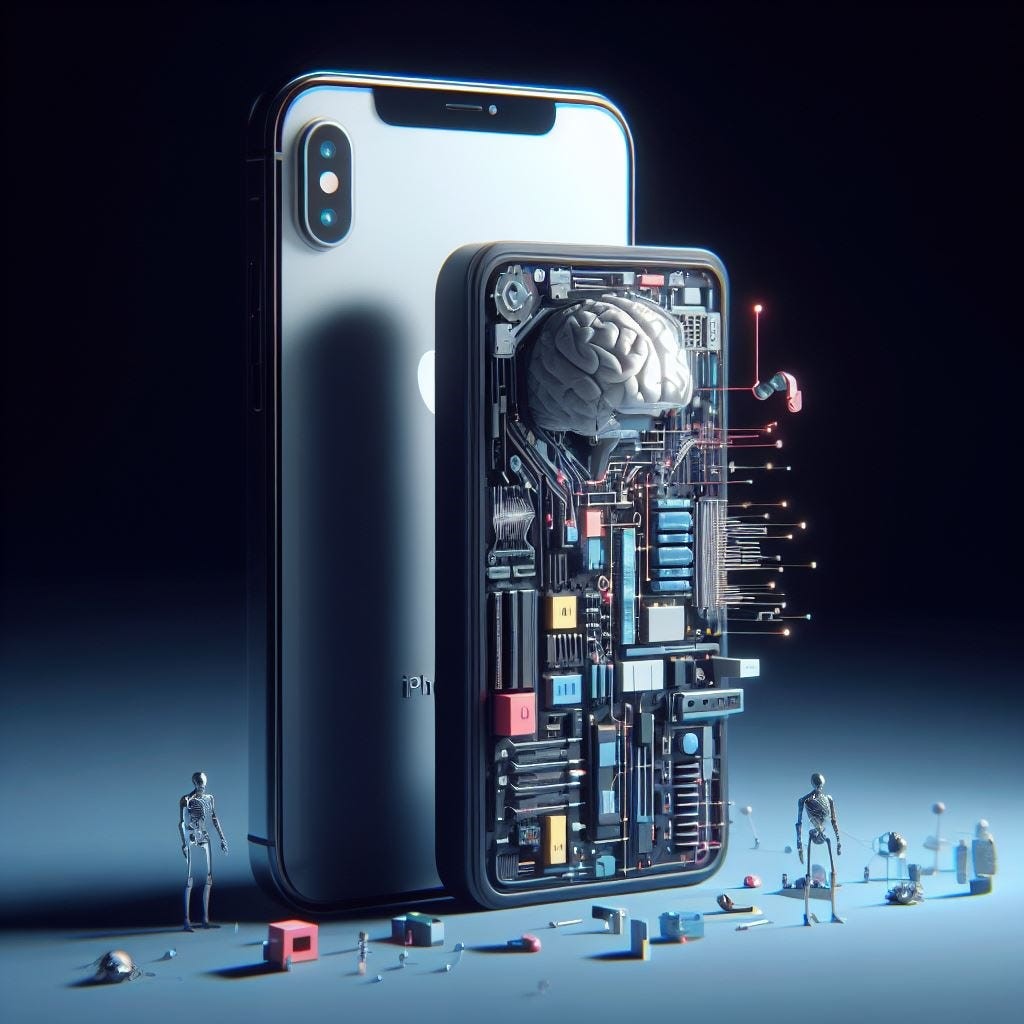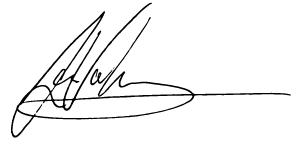- The best kind of customer is…?
- Hey Volko wants the building codes!
- A distressed barn owl
Editor’s note: Today, we bring you a guest piece from Sam Volkering from one of our newest publications, AI Collision, which was first published on 17 October. We hope you enjoy it.
To hear from Sam more often and learn more about the latest developments in AI, just click here to sign up for free on Substack.
Welcome to AI Collision,

iPhone’s creator eyes up AI
It was 1999. I was still at school. I remember the year well because my Australian Rules Football (AFL) team, the North Melbourne Kangaroos, were absolutely flying.
They would go on to win the Premiership, the AFL Grand Final, that year. I also remember it because I was in Sydney when they won it, around my birthday. I was away playing waterpolo at a national schoolboys’ competition.
I was happy it was my birthday, sad because I was in Sydney when in Melbourne my footy team were winning the flag, but happy because I was playing in a national waterpolo competition.
My folks must have known I was a bit cheesed-off about missing the “Granny” and the celebrations that come with it. So, in Sydney, as it was my birthday, they got me something great.
Better than great actually. It was amazing.
As I unwrapped the box, there it was, in blue on the top of the box…

My folks had only gone and got me a mobile phone for my birthday!
And not just any phone. A Nokia. More specifically, a Nokia 3210. 160 million units later, the Nokia 3210 was a game changer in mobile phones.
It was hugely popular with kids my age, and today it is still one of the highest selling mobile phones of all time.
It’s easy to see why: being able to text your mates; playing “Snake” on the train to and from school; a battery that basically never died; and just to feel connected to the modern world.
It was and will forever be a cultural phenomenon.
I loved that phone. I’m sure it’s still in a storage box somewhere in a shipping container my dad has somewhere.
But those old Nokia phones were something else. They were progress, they were cutting-edge technology, they were beautiful industrial design.
They bridged the intangible world of mobile communications and technology to the most important consumers in the world… teenagers.
The 3210, of course, was not the first mobile phone. Nor was it the first Nokia (or the last). But it was arguably the most influential.
The same can be said of Apple’s iPhone.
We all know the iPhone. Heck, I even had an iPhone 3G when they first came out. And I don’t know too many people that don’t have one now or didn’t at some point in the past.
The iPhone, like the 3210, was a cultural phenomenon.
It too was progress, technology and beautiful industrial design all in one package. It may have been a world away from the technology of the 3210, but it shared the same kind of impact on the world.
And the iPhone appealed to the most important customer of all… teenagers.
I tell the story of the 3210 and the iPhone for good reason. These weren’t the first, pioneering tech breakthroughs they’re held up to be. But they’re remembered as such. And that’s because we hold them on a pedestal because of their wide appeal. They were nice to look at, nice to use and they were a design breakthrough almost more than the technology they contained.
That’s important to know. Because right now, we may be on the precipice of another 3210 and iPhone moment.
There’s no doubt that artificial intelligence is branching out into all kinds of aspects in our lives. Through cloud services, into our homes with robotics like the Roomba, and we even casually call for “Alexa” or “Siri” when we need some help, like setting an oven timer…
But AI, for all its potential, is still clunky.
It’s not easy to use. It’s not right there at your fingertips. It might feel that way to some technologists. But run the “grandma” test over it, and you’ll find that it’s really not that easy for Nan to tap into the full potential of AI in her life.
But what if there was something like that? Softbank (TSE:9434) seems to think it’s something worth throwing $1 billion at.
OpenAI (now partly owned by Microsoft), is the company that released ChatGPT into the wild and it is looking at developing an AI phone that does what only a handful of phones before it has done – make an impact on culture, not just technology.
An AI phone that puts real AI at the fingertips, easily, seamlessly, in a way that means everyone (including Nan) can use.
But it’ll clearly be going for the most important customer of all first.
That’s why it’s rumoured the company is looking to do an “AI-phone” with the impeccable design credentials of Jony Ive, the designer of the iPhone and other game-changing Apple products, like the iMac, iPod and iPad.
It’s quite the collision of industry. Industrial design with Ive, the AI powerhouse of OpenAI (with a flavour of Microsoft) and a kick-in of about $1 billion from Japanese conglomerate Softbank.
Something big is brewing, you can feel it, and it could certainly change the fortunes of one of those companies.
AI gone wild 🤪
Last week I wrote about the idea of Tom Hanks selling dental plans without actually selling dental plans.
Meaning, some shifty company used an AI version of Tom to sell a product.
The pain of litigation was probably worth the publicity. Albeit I hope not.
But as I thought more about this, it does make me worried about how AI is going to be used in dodgy ways.
For example, let’s assume we’re work mates, you and me. (C’mon that’s not such a wild idea, is it?)
We work in the same building. Sometimes in the office, sometimes WFH (work from home). My nickname in the office is Volko.
And it’s late on a Friday, you’re working at home, and you get a voicemail from me. It goes (hit play below):
What do you do?
You’ve got the kids kicking down the office door, the dog is barking, you’re a little distracted.
Sounds like me, so you don’t have any reason to assume it’s not me. So, you promptly send the pin code to the office.
You then come in on Monday and find out that the office has been looted.
Someone came in on Friday evening and took all the servers, computers, anything of value.
The interesting thing is that they used the pin code for the building to get access. The police suspect an inside job.
You’re bricking it at this point. Maybe that voicemail was a little off. You ask me what I was doing in the office on Friday.
I tell you, I wasn’t there. You say, but you called and left a voicemail. I tell you I didn’t. Because… I didn’t.
My voice was “spoofed” by AI. You were duped, scammed, tricked by AI.
This is how it gets used. This is how scams evolve. There are and will be of course ways to detect this. Maybe even using AI to detect AI. But there is no doubt that AI scams will be knocking on your door (and mine) very soon.
Boomers & Busters 💰
AI and AI-related stocks moving and shaking up the markets this week. (All performance data below over the rolling week.)
Boom 📈
- BrainChip Holdings (ASX:BRN) up 26%
- Predictive Oncology (NASDAQ:POAI) up 13%
- AeroVironment (NASDAQ:AVAV) up 6%
Bust 📉
- Wearable Devices (NASDAQ:WLDS) down 17%
- UiPath (NYSE:PATH) down 8%
- Teradyne (NASDAQ:TER) down 5%
From the hive mind 🧠
- Midjourney vs Dalle-3 vs Adobe Firefly: winner takes all
- AI can be scary, but also very helpful too
- What if AI wrote the 1,000-year-old ancient texts?
- £32,000 a year for AI education?
Weirdest AI image of the day
A barn owl at home stressing about bills – r/Weirddalle

ChatGPT quote of the day
“I think there’s a lot of hype around AI, but I think it’s going to be incredibly important in the future.”
– Demis Hassabis, co-founder of DeepMind
Thanks for reading, see you next time!

Sam Volkering
Editor-in-Chief, AI Collision
 Photo by
Photo by 


